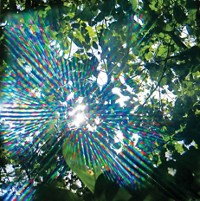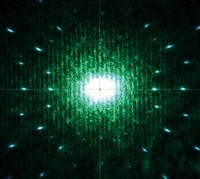Advertisement
Grab your lab coat. Let's get started
Welcome!
Welcome!
Create an account below to get 6 C&EN articles per month, receive newsletters and more - all free.
It seems this is your first time logging in online. Please enter the following information to continue.
As an ACS member you automatically get access to this site. All we need is few more details to create your reading experience.
Not you? Sign in with a different account.
Not you? Sign in with a different account.
ERROR 1
ERROR 1
ERROR 2
ERROR 2
ERROR 2
ERROR 2
ERROR 2
Password and Confirm password must match.
If you have an ACS member number, please enter it here so we can link this account to your membership. (optional)
ERROR 2
ACS values your privacy. By submitting your information, you are gaining access to C&EN and subscribing to our weekly newsletter. We use the information you provide to make your reading experience better, and we will never sell your data to third party members.
Photonics
Chemistry In Pictures
Chemistry in Pictures: Blade Runner sky
by Craig Bettenhausen
September 10, 2020






San Francisco residents woke up Sept. 9 to a world tinted a surreal orange, as shown in these photos taken around the region. All across the Bay Area and other parts of the US West Coast, a layer of smoke from wildfires to the east sat above clear air coming in from the Pacific Ocean. Dust and smoke particles in that smoky layer scattered the sunlight, “the same effect that makes the sky blue and the evening red,” says Sam Trahan, a physicist with expertise in atmospheric physics and modeling. Both Rayleigh scattering, which most strongly affects short-wavelength light toward the blue end of the spectrum, and Mie scattering, which is not as dependent on wavelength, were at play in the effect.
At first, “although our sky was discolored and hazy, surface air quality was not impacted as much,” says Roya Bahreini, a professor of atmospheric science at the University of California, Riverside. But over the next week, she saw “different weather patterns and more subsidence and mixing of the smoke with the surface layer air, and so particulate matter pollution was a lot worse all over Southern California.”
Photos by NatalieGrant, Adrienne Peña, Lindsey Anne, Kurt Texter, and David Gian-Cursio
Do science. Take pictures. Win money. Enter our photo contest here.
Update
This story was originally posted at 11:20 a.m. on Sept. 10, 2020. It was updated on Sept. 17, 2020, at 11:14 a.m. to incorporate additional comments.




Join the conversation
Contact the reporter
Submit a Letter to the Editor for publication
Engage with us on Twitter